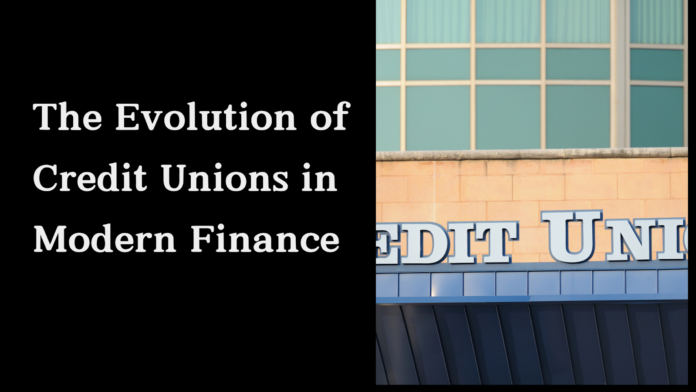Last Updated on August 7, 2024 by Ali Hamza
Navigating the financial landscape can often leave you searching for a banking option that feels more like a community and less like a corporation. Credit unions offer a refreshing alternative, standing out as member-owned cooperatives that prioritize your needs.
Unlike traditional banks, credit unions reinvest profits to benefit you with lower fees and better rates. Particularly in Idaho, from Boise to Nampa and Caldwell, credit unions have evolved not only to keep pace with but also to lead in offering personalized financial services that truly understand and meet the unique needs of your community.
In this article, let’s explore how credit unions have transformed to become a pivotal part of modern finance, ensuring your financial well-being is always at the heart of their operations.
Table of Contents
Historical Context
- As credit unions evolved, they expanded beyond their origins, adapting to the varied financial needs of communities worldwide, including in the United States.
- By the early 20th century, they began to thrive, particularly during economic downturns, when their core values of mutual aid and community support were most needed.
- This period of growth saw credit unions broaden their offerings beyond basic savings and loans to include mortgages, insurance, and online banking services.
- Their commitment to prioritizing member needs, enhancing financial literacy, and bolstering communities has distinguished credit unions in the modern financial landscape, showcasing their evolution as more than just financial institutions but as pillars of support for their members.
Key Trends in Credit Union Evolution
Expansion of Services
While credit unions traditionally focused on savings and loan services, they have since expanded their offerings to include a diverse suite of products, ranging from mortgages and car loans to investment accounts and insurance services. This diversification has allowed credit unions to better adapt to the evolving needs of their members.
According to data from the Credit Union National Association (CUNA), 90% of credit unions now provide checking accounts, 87% offer auto loans, and 78% manage mortgage loans. This breadth of services has positioned credit unions as comprehensive financial partners for their members.
Non-Profit Model
Unlike traditional banks, which operate as for-profit entities, credit unions are structured as non-profit organizations. Any profits generated by credit unions are reinvested back into the cooperative, enabling them to provide members with better rates, lower fees, and improved services.
As highlighted by The Motley Fool, this non-profit structure allows credit unions to return profits directly to members through more favorable terms, rather than distributing them to shareholders.
Personalized Customer Service
Credit unions distinguish themselves through their commitment to fostering close relationships with members. In Idaho cities like Boise, Nampa, and Caldwell, credit unions have made community reinvestment a priority, sponsoring local events, supporting charities, and providing financial education programs. This commitment to community development has strengthened the bond between credit unions and their members, fostering a sense of loyalty and trust. Credit Union in Boise addresses the need for more accessible financial services, offering solutions that traditional banks may not provide.
By focusing on personalized service and community engagement, they manage to bridge gaps in financial understanding and access. Seventy words later, it’s clear that the Credit Union in Boise not only contributes to financial well-being but also plays a crucial role in community cohesion, proving that with the right approach, financial institutions can indeed overcome barriers to financial inclusivity and education, reinforcing the unique position of credit unions in the modern financial ecosystem.
Community Focus
Credit unions are deeply rooted in the communities they serve, actively engaging in various initiatives and reinvesting a significant portion of their income back into local programs. According to the World Council of Credit Unions, credit unions reinvest an impressive 88% of their income into community initiatives
In Idaho cities like Boise, Nampa, and Caldwell, credit unions have made community reinvestment a priority, sponsoring local events, supporting charities, and providing financial education programs. This commitment to community development has strengthened the bond between credit unions and their members, fostering a sense of loyalty and trust.
Challenges and Opportunities
Consolidation
While the total number of credit unions in the United States has decreased by approximately 10% over the past decade, their combined assets have grown by an impressive 25% during the same period. This consolidation trend has allowed remaining credit unions to leverage greater economies of scale, enabling them to invest in technology, expand their product offerings, and enhance operational efficiencies.
However, as credit unions navigate this consolidation landscape, it will be crucial for them to strike a balance between growth and maintaining accessibility and diversity of services. Credit unions in Idaho have not been immune to this consolidation trend, with several mergers and acquisitions taking place in recent years.
Regulatory Environment
Complying with an ever-evolving regulatory environment presents an ongoing challenge for credit unions. While regulations are essential for maintaining safety, transparency, and consumer protection, the complexity of these rules can sometimes hinder innovation compared to the less-regulated fintech startups entering the market.
Advocacy for supportive policies that foster responsible innovation while maintaining appropriate oversight will be key for credit unions’ future prospects. In Idaho, credit union associations and industry groups play a vital role in shaping the regulatory landscape and ensuring that the unique needs of credit unions are addressed.
Technological Advancements
Investing in robust online and mobile banking capabilities has become essential for credit unions to remain competitive and attract younger members. Consumers, particularly millennials and Generation Z, have come to expect seamless digital experiences, and credit unions must adapt to meet these evolving expectations.
Credit unions in Boise, Nampa, Caldwell, and other Idaho cities have prioritized upgrading their digital platforms and services, offering user-friendly mobile apps, online account management, and secure digital banking solutions. Finding the right balance between effective regulation and technological transformation will define credit unions’ path forward in the digital age.
While credit unions and traditional banks both provide core financial services, there are several key distinctions between these two types of institutions:
| Feature | Credit Unions | Banks |
| Ownership Structure | Non-profit, member-owned cooperatives | For-profit, shareholder-owned corporations |
| Governance | Member-elected board of directors | Appointed board of directors |
| Profit Allocation | Profits returned to members through better rates and lower fees | Profits distributed to shareholders |
| Account Requirements | Membership criteria like location, employment, or affiliation | No membership criteria required |
| Customer Experience | More personalized service and community focus | Larger scale with varied service levels |
This comparison illustrates the fundamental differences in incentives, operations, and priorities between the cooperative credit union model and traditional for-profit banks. While banks aim to maximize profits for their shareholders, credit unions prioritize member interests and community reinvestment.
Frequently Asked Questions (FAQs)
Membership eligibility for credit unions in Idaho varies, but it often includes requirements such as living or working in certain areas of the state, belonging to particular groups or organizations, or having a family member who is already a member. Some credit unions in Boise, Nampa, and Caldwell may have specific criteria related to employment or residency in those cities.
As non-profit, member-owned cooperatives, credit unions provide personalized service and return their profits to members through better rates, lower fees, and improved services. Additionally, credit unions have a strong focus on community engagement and reinvestment, while traditional banks operate as for-profit entities with a primary goal of maximizing shareholder value.
Credit unions play an active role in the communities they serve. In addition to providing financial services, they contribute through various initiatives, such as financial education programs, sponsoring local events, offering small business loans, supporting charitable organizations, and fostering economic development.
In summary, credit unions have undergone a remarkable evolution from their grassroots origins to become influential players in the modern financial landscape. By prioritizing member interests and community reinvestment over profits, credit unions offer an attractive alternative to traditional banking. As they navigate challenges such as consolidation, regulation, and technological change, credit unions’ cooperative principles will continue to guide their evolution, ensuring they remain a valuable and trusted resource for communities across Idaho and beyond.



























